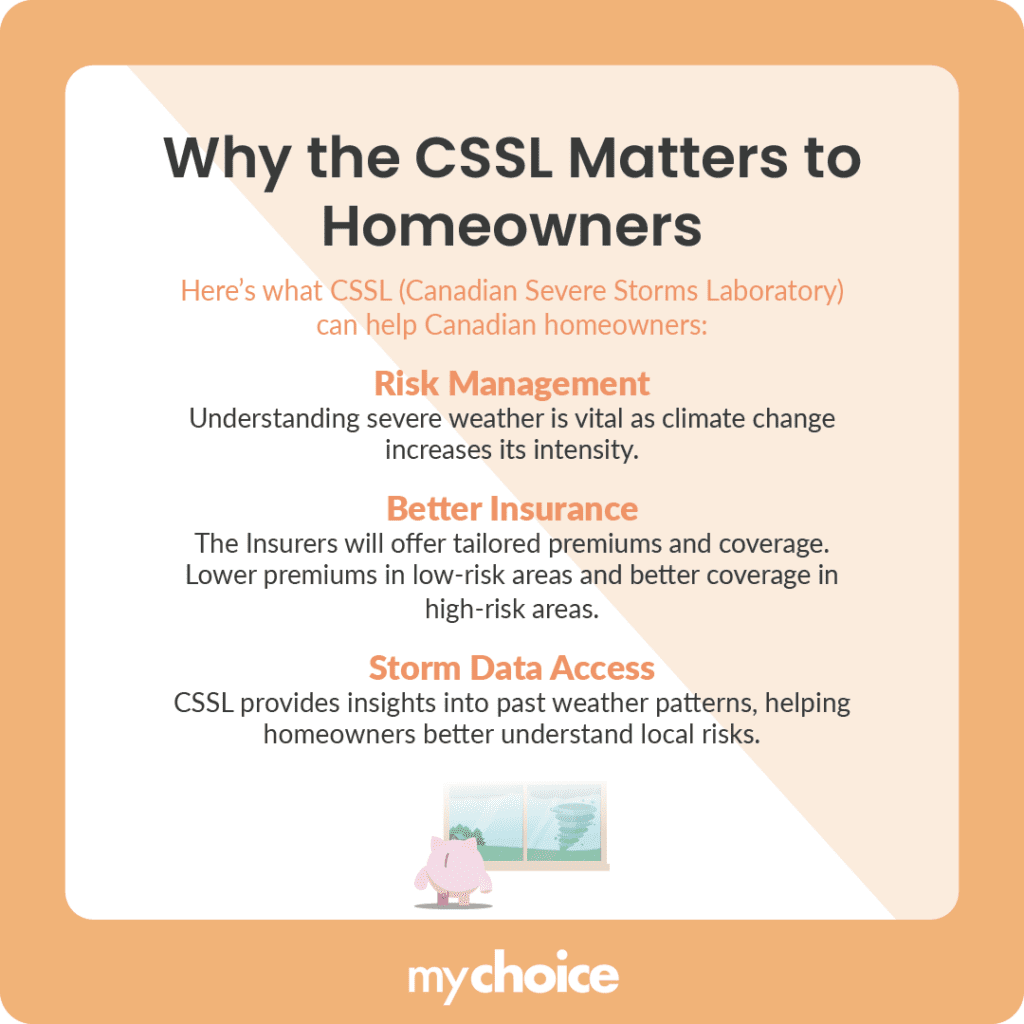On October 28, 2024, Western University in Ontario launched the Canadian Severe Storms Laboratory (CSSL). This new facility aims to be the authoritative source for severe storm data and research, focusing on thunderstorms, tornadoes, hailstorms, and flash floods. The CSSL builds on existing projects like the Northern Tornadoes Project (NTP) and the Northern Hail Project (NHP), which have already made substantial contributions to understanding severe weather in Canada.
Will the CSSL’s work directly affect homeowners? How will its research influence home insurance policies? Read on to find out more about the Canadian Severe Storms Laboratory and its relevance to homeowners and home insurance.
Why the CSSL Matters to Homeowners
As severe weather incidents and natural disasters become more frequent and intense due to climate change, it becomes more and more important to understand these events for effective risk management. The research performed by CSSL will lead to improved risk assessments for severe weather events, which can directly influence home insurance policies.
Insurance companies rely heavily on accurate data regarding weather patterns and risks when determining premiums and coverage options. With the CSSL providing detailed analyses of severe storms and their impacts, insurers can better assess risks associated with specific geographic areas. This could mean more tailored insurance products that reflect actual risk levels rather than generalized assumptions. For homeowners, this could mean potentially lower premiums in lower-risk areas or more comprehensive coverage options in regions prone to severe weather.
As the CSSL develops climatologies of severe weather events, homeowners will gain access to valuable information about historical storm patterns in their regions. This knowledge can help them to make informed decisions about property improvements and insurance needs, which can lead to safer homes and more prepared communities.

The Rising Threat of Severe Storms in Canada
In recent years, there has been a troubling increase in severe weather incidents across Canada. Events such as tornadoes, hailstorms, and devastating floods have become more common and intense. According to the IBC, 2024 was the costliest year in terms of insurance claims due to severe weather.
For instance, the summer of 2024 witnessed catastrophic flooding in the Greater Toronto Area (GTA), which highlighted vulnerabilities in urban planning and emergency preparedness. Other areas also saw massive damage from severe weather incidents like hailstorms in Calgary and wildfires in Jasper. Such incidents lead to substantial financial losses for homeowners and businesses alike, resulting in increased insurance claims and economic strain on communities.
The CSSL’s focus on documenting these events will be invaluable for understanding their frequency and severity. By analyzing data from past incidents, researchers can identify patterns that may help predict future occurrences. This predictive capability is essential for developing effective mitigation strategies that can reduce damage during severe weather events.
Protecting Your Home: What You Need to Know
Disaster preparedness is the responsibility of every homeowner. Natural disasters can strike at any time, so it’s important to take proactive steps to protect your home against severe weather. Here are some steps you can take:
While the CSSL can make it easier to predict severe weather patterns in the future, it’s still up to homeowners to take steps to safeguard their property in order to minimize damage and injury.
Key Advice from MyChoice
- Always check the local weather forecast to know when severe weather events such as storms, floods, hail, or tornadoes might happen in your area.
- Review your home insurance policy regularly to make sure that you’re adequately covered in case of a natural disaster that causes damage to your home.
- When the CSSL starts publishing data regarding severe weather patterns, insurance companies may use that to update home insurance premiums. Check with your insurer to see if new findings from the CSSL will affect your yearly premiums.








